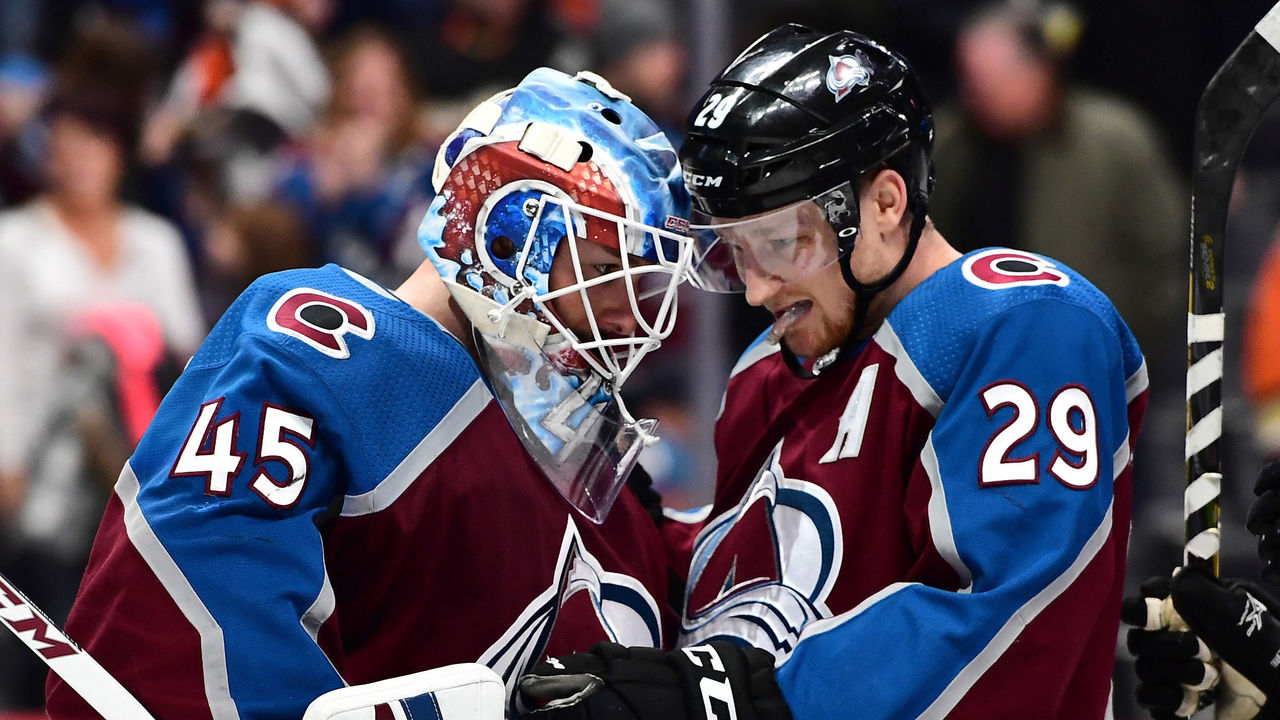Corsi Hockey League: Why the red-hot Avs will come back to earth
On the surface, everything's going great for the Colorado Avalanche.
Last season's last-place club is riding a 10-game win streak and occupies a Western Conference wild-card playoff spot heading into Tuesday's game in Montreal. In the bigger picture, the Avs boast a season record of 27-16-3 with a fifth-ranked goal differential of plus-22.
But is a team one year removed from finishing with the lowest point percentage in the shootout era truly a force to be reckoned with?
At the moment, the answer appears to be a clear yes, but the underlying numbers suggest the Avalanche will eventually begin to roll downhill.
First, it's important to note the Avs' special teams have been very effective, with the league's No. 8 power play (20.9 percent) and its second-ranked penalty kill (84.9 percent).
The majority of the game is played at even strength, however, so here are a few key five-on-five stats that paint a more complete picture.
Corsi For rating - 48.32
As a refresher, Corsi measures shot attempt differential, and is calculated by adding a team's shots on goal, shot attempts gone wide, and blocked shot attempts, and then subtracting that number from the same types of shot attempts directed at that team's own net.
The difference is then presented as a percentage of shot attempts for and against. A percentage above 50 generally signals a team's ability to control play.
Colorado ranks 23rd in this category at 48.32 percent, meaning the team's opposition is regularly sending more pucks toward the net.
Expected Goals For percentage - 46.86
With that in mind, let's turn to expected goals for, which does not look favorably on the Avs. This stat evaluates the types of shots for and against, giving some more value than others. Corsica takes the following variables into account:
- Shot type
- Shot distance
- Shot angle
- Rebounds
- Rush shots
- Strength state
Colorado's xGF% ranks 26th, which suggests the types of shots taken and allowed will amount to more goals scored by the opposition than by the Avs.
PDO - 101.78

So what is working for Colorado?
The power play and penalty kill have already been mentioned, but the Avs are also riding a high PDO - the sum of a team's shooting percentage and save percentage at even strength. It's believed that most teams will level off close to 100, with a higher or lower number suggesting that luck - positive or negative, respectively - is playing a significant role.
The Avs' PDO is fourth in the NHL, with a second-ranked shooting percentage (8.99) added to a 10th-ranked save percentage (92.79). In other words, they're capitalizing on their offensive chances and riding some hot goaltending, especially as of late.
The performances of Nathan MacKinnon (19 points in the last 10 games) and Jonathan Bernier (.954 save percentage in January) during the streak have clearly provided a huge boost. Skaters including Alexander Kerfoot, Gabriel Landeskog, and Mikko Rantanen also all have shooting percentages over 16 for the season - well above the norm.
Essentially, the high PDO tells us that puck luck isn't likely to go the Avalanche's way forever, and some amount of regression is expected.
A dropoff is not guaranteed - the game is played on ice, after all, not simulated on computers - and what the Avs have achieved up to this point is worth celebrating. They've already eclipsed last season's win and point totals.
Still, Colorado needed 10 straight wins just to climb into a playoff spot, and the team's position remains tenuous at best. Based on all of the above, don't be surprised if the Avalanche are on the outside looking in when the season ends.
(Statistical information courtesy: Corsica Hockey)
(Photo courtesy: Getty Images)